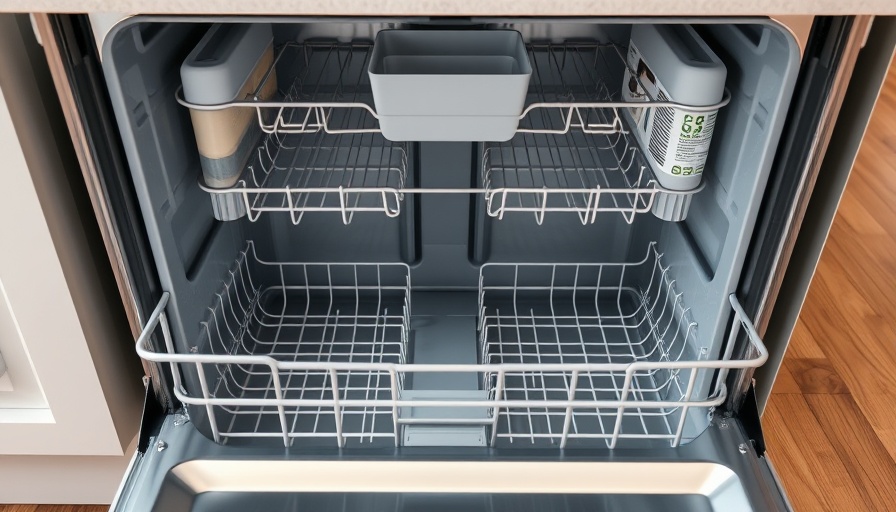
Unleash the Magic of Pantry Staples
Have you ever opened your dishwasher only to be met with a musty, odoriferous blast? Fear not! Cleaning a smelly dishwasher can be a breeze with things you already have in your pantry. Using common household items such as vinegar and baking soda, you can tackle even the toughest of dishwasher odors without breaking a sweat. It's time to get your appliance back to smelling as fresh as a meadow!
Why Does Your Dishwasher Stink?
First things first—understanding why your dishwasher has developed a funky smell is crucial. Buildup of food particles, grease, and even stagnant water can lead to this unpleasant aroma. To combat this issue, regular maintenance is key. Cleaning during your routine chores ensures that your dishwasher remains a hygienic helper in the kitchen. A quarterly check on your appliance can lead to a stink-free experience at every wash.
The Power of Vinegar in Cleaning
Vinegar isn't just the secret ingredient in salad dressings; it doubles as a powerful cleaning agent! To rid your dishwasher of bad odors using vinegar, simply place a cup of it on the top rack and run a hot cycle. The acidity in vinegar acts as a natural deodorizer and helps dissolve any grime, leaving the interior of your dishwasher sparkling.
Baking Soda to the Rescue
If vinegar is the superhero, baking soda is its trusty sidekick. After you've run a vinegar cycle, sprinkle one cup of baking soda across the bottom of the dishwasher. Run a short hot cycle again, and prepare yourself for a clean and fresh-smelling appliance! Baking soda neutralizes odors and leaves the machine smelling delightful.
Regular Maintenance: Your Dishwasher's Best Friend
Just as a healthy diet requires consistent effort, maintaining your dishwasher's cleanliness requires regular attention. Here are three key maintenance tips to keep your dishwasher odor-free:
- Scrub the Filter: At least once a month, remove and clean your dishwasher's filter. This ensures no food debris gets trapped, contributing to that dreadful smell.
- Check the Drain: Make sure the drainage areas are clear and free from blockages.
- Wipe the Seals: Regularly clean the seals around the door where dirt and grime tend to accumulate.
Comparing Natural Remedies to Chemical Cleaners
As we consider the effectiveness of pantry staples against chemical cleaners, it’s important to highlight the benefits of going green. Chemical cleaners often contain harsh substances that might damage your appliance, while vinegar and baking soda are safe, effective, and environmentally friendly. Additionally, using natural ingredients means you're minimizing your carbon footprint.
Living the Sustainable Life
In a world increasingly focused on sustainability, it's great to know that we can keep our homes clean without resorting to toxic chemicals. Adopting natural cleaning methods not only ensures your dishwasher stays fresh but also aligns with a healthier lifestyle. Plus, it’s affordable! With basic pantry staples, you create a DIY cleaning solution that lasts and saves you bucks.
It’s clear that knowing how to clean a smelly dishwasher with pantry staples is not just a useful skill—it’s a testament to how small changes in our home maintenance can lead to more significant lifestyle shifts. So grab that bottle of vinegar, shelf of baking soda, and get started!
 Add Row
Add Row  Add
Add 



Write A Comment